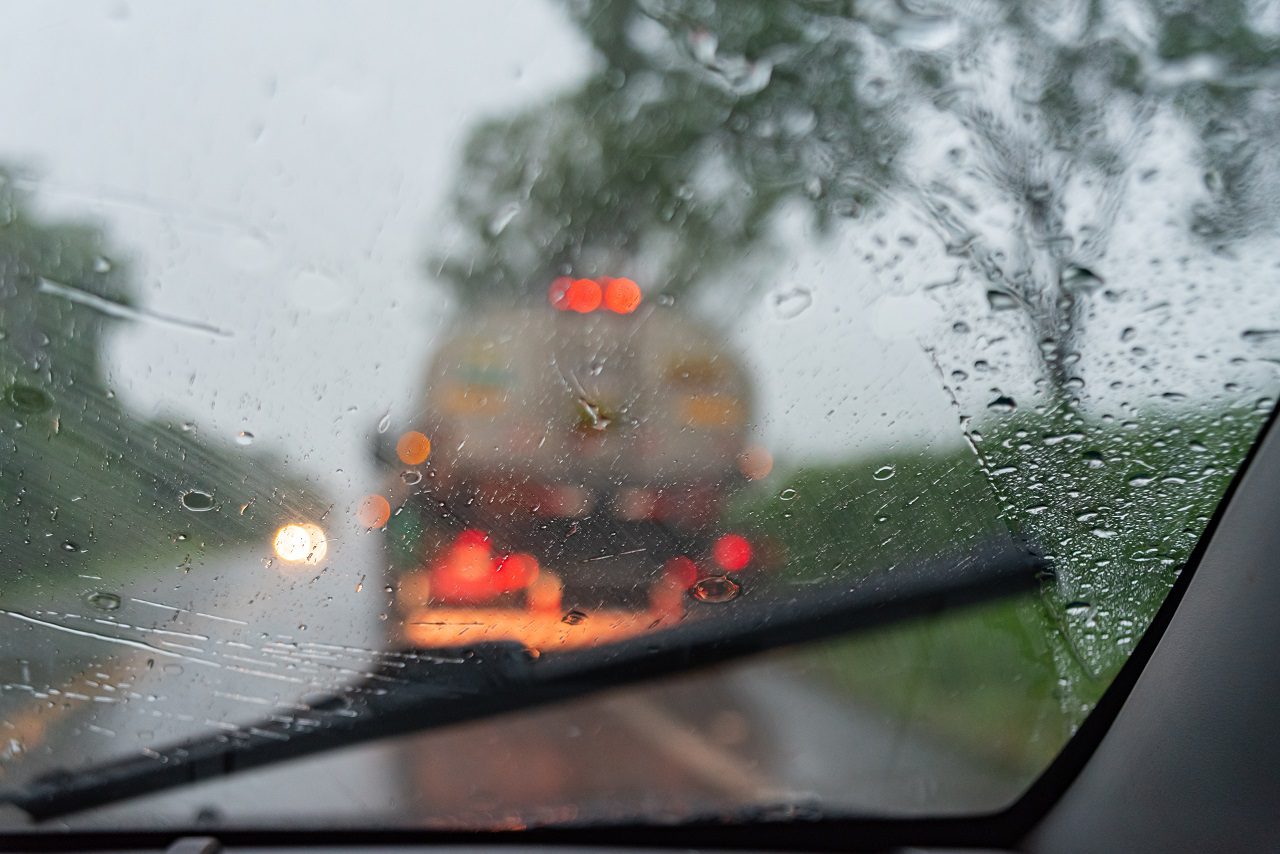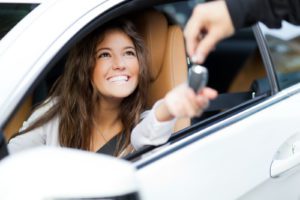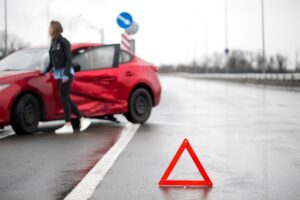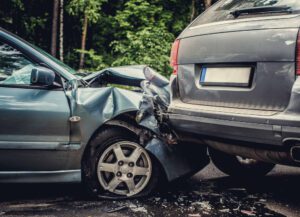As spring arrives in Charlotte, the warmer weather and blooming flowers are a welcome sight. However, the heavy downpours that often accompany this season can make driving treacherous. According to the Federal Highway Administration study conducted from 2007 to 2016, about 75% of weather-related fatalities occur on wet pavement, and nearly half happen during rainfall. Moreover, the U.S. Department of Transportation reports that on average, there are over 950,000 automobile crashes each year due to wet pavement, resulting in approximately 4,700 deaths and 384,000 injuries.
At Top Dogz Towing Company, we’ve seen firsthand the accidents that can result from slick roads and low visibility during these spring storms. In this blog post, we want to share some tips on how to prevent accidents and stay safe while navigating rain-soaked streets. By understanding the risks and adapting your driving habits accordingly, you can significantly reduce your chances of becoming a statistic.
Tip #1: Slow Down
When it starts to pour, the most important thing you can do is reduce your speed. Even if you’re in a rush, it’s not worth risking hydroplaning or losing control. Slowing down gives you more time to react if something unexpected happens.
It’s also critical to increase the distance between you and the car in front of you. Slick roads mean longer stopping distances. A good rule of thumb is to maintain at least five seconds of following distance in the rain.
Tip #2: Make Sure Your Tires Have Good Tread
Your tires are your main point of contact with the road, so it’s crucial that they are in good condition, especially in wet weather. Tires with worn treads are much more likely to hydroplane, causing you to lose steering control.
Check your tire tread depth regularly and replace tires when the tread gets worn down. Also be sure to keep your tires properly inflated – both underinflation and overinflation reduce traction on wet pavement.
Tip #3: Turn On Your Headlights
North Carolina law requires you to turn on your headlights whenever you need to use your windshield wipers. This helps you see better in low visibility conditions, and just as importantly, helps other drivers see you. Avoid using your high beams in the rain though, as the light reflects off the rain drops and actually reduces visibility.
Tip #4: Brake and Accelerate Gently
Slamming on your brakes or punching the accelerator is always risky, but it’s especially dangerous on slippery roads. Hard braking can cause your wheels to lock up, leading to a skid. Fast acceleration can make your wheels spin out.
When you need to slow down or speed up in the rain, do it gradually to maintain maximum traction and control.
Accident Recovery | Charlotte NC (topdogztowing.com)
Tip #5: Avoid Large Puddles
That large puddle in the road could be deceptively deep. Driving through it could cause you to hydroplane or even flood your engine if water gets sucked into your air intake. If you can’t gauge the depth, try to drive around it if you can do so safely. If you must drive through standing water, do so slowly and be prepared for your brakes to work less effectively until they dry out afterwards.
Tip #6: Turn Off Cruise Control
Cruise control doesn’t mix well with wet roads. If you start to hydroplane while cruise control is engaged, your car may actually accelerate, exacerbating the loss of control.
It’s best to turn off cruise and control your speed manually when it’s raining heavily.
Cruise control is a great feature for maintaining a constant speed on dry roads, but it’s not designed to handle the unique challenges of wet driving conditions. Here’s a more detailed explanation of why cruise control and wet roads don’t mix well:
- Hydroplaning Risk: One of the main dangers of driving on wet roads is hydroplaning, which occurs when your tires lose contact with the road surface and ride on top of a thin layer of water. If you start to hydroplane while using cruise control, your car’s automatic acceleration may actually cause your wheels to spin faster, exacerbating the loss of traction and making it harder to regain control.
- Reduced Traction: Wet roads provide significantly less traction than dry roads. Cruise control systems are designed to maintain a constant speed, but they don’t take into account the reduced traction on wet pavement. As a result, your car may accelerate or brake more aggressively than is safe, increasing the risk of skidding or sliding.
- Inability to Anticipate: Cruise control can’t see the road ahead and anticipate potential hazards like puddles, standing water, or debris. A human driver can spot these dangers and proactively slow down or steer around them, but cruise control will blindly maintain speed until the driver intervenes.
- Delayed Reaction Time: When you’re using cruise control, there’s an extra step involved in slowing down or speeding up – you have to disengage the system first. In wet conditions where quick reactions are often necessary, this extra step can make the difference between avoiding a collision and being involved in one.
- False Sense of Security: Using cruise control in the rain can lead to a false sense of security, making drivers less attentive and more complacent. In challenging driving conditions, it’s important to be fully engaged and focused on the task of driving.
For these reasons, it’s best to manually control your speed in wet weather, so you can quickly adjust to changing road conditions and maintain maximum control over your vehicle. While cruise control is a useful tool in many situations, it’s not designed for the unique challenges of driving on rain-slicked roads.
Tip #7: Pull Over if it Gets Too Bad
Sometimes, the rain is coming down so hard that you simply can’t see well enough to drive safely, even with your lights and wipers on full blast. If that’s the case, find a safe place to pull over, turn on your hazard lights, and wait for the storm to subside a bit before continuing your journey.
Arriving a bit late is far better than not arriving at all.
Tip #8: Look Further Ahead
In heavy rain, visibility is reduced, making it harder to spot potential hazards. To give yourself more time to react, look as far down the road as possible. This helps you anticipate problems and respond smoothly and safely. Avoid focusing solely on the vehicle directly in front of you – instead, scan the road ahead for brake lights, debris, or other obstacles.
Tip #9: Avoid Distractions
Distracted driving is always dangerous, but it becomes even riskier when you’re driving in heavy rain. To ensure you’re giving your full attention to the road, put your phone away and avoid other distractions like eating, adjusting the radio, or engaging in intense conversations with passengers. Keep both hands on the wheel and your eyes on the road.
Tip #10: Be Smooth with Your Inputs
Abrupt maneuvers, such as hard braking, sharp steering, or rapid acceleration, increase the risk of losing control on wet roads. Instead, aim for smooth, gradual inputs. When you need to brake, apply the pedal slowly and steadily. Make steering adjustments gently and gradually. Accelerate smoothly to avoid wheel spin.
Tip #11: Don’t Follow Too Closely
Tailgating is always risky, but it’s especially dangerous on wet roads where stopping distances are increased. If the vehicle in front of you stops suddenly, you’re more likely to slide into them if you’re following too closely. Maintain an extra-large following distance in the rain to give yourself ample space to stop safely.
Tip #12: Take Extra Care on Turns
Wet pavement provides less traction, which is particularly noticeable when you’re turning. To navigate turns safely in the rain, slow down more than you usually would before entering the curve. Avoid braking hard or accelerating while you’re in the turn, as this can cause your tires to lose grip. Take the turn smoothly and gradually.
Tip #13: Watch Out for Standing Water
As we mentioned earlier, driving through puddles can lead to hydroplaning. Keep an eye out for water standing on the road ahead. If you can’t avoid it, slow down before reaching the puddle to minimize the risk of losing control. After driving through standing water, test your brakes lightly to make sure they’re still working effectively.
Tip #14: Use Your Defrosters
Rain doesn’t just reduce visibility by obscuring your view through the windshield – it can also cause your windows to fog up from the inside. To maintain clear visibility, make use of your front and rear defrosters. They help to evaporate the moisture on the inside of your windows, ensuring you have a clear view of the road.
Tip #15: Stay Patient and Calm
Heavy rain often leads to slower traffic and longer commute times. It’s easy to get frustrated in these situations, but it’s important to maintain your composure. Don’t let impatience push you into making risky decisions like following too closely, cutting off other drivers, or driving too fast for the conditions.
Stay calm, maintain a patient mindset, and accept that it may take you a bit longer to reach your destination.
Stay Safe Charlotte!
By incorporating these defensive driving techniques into your rainy day driving routine, you can significantly enhance your safety on wet roads. Remember, the key is to anticipate potential problems and take proactive steps to avoid them.
Drive smoothly, maintain a safe following distance, and keep a vigilant eye out for hazards. With these strategies in mind, you’ll be well-equipped to handle even the heaviest Charlotte downpours.




